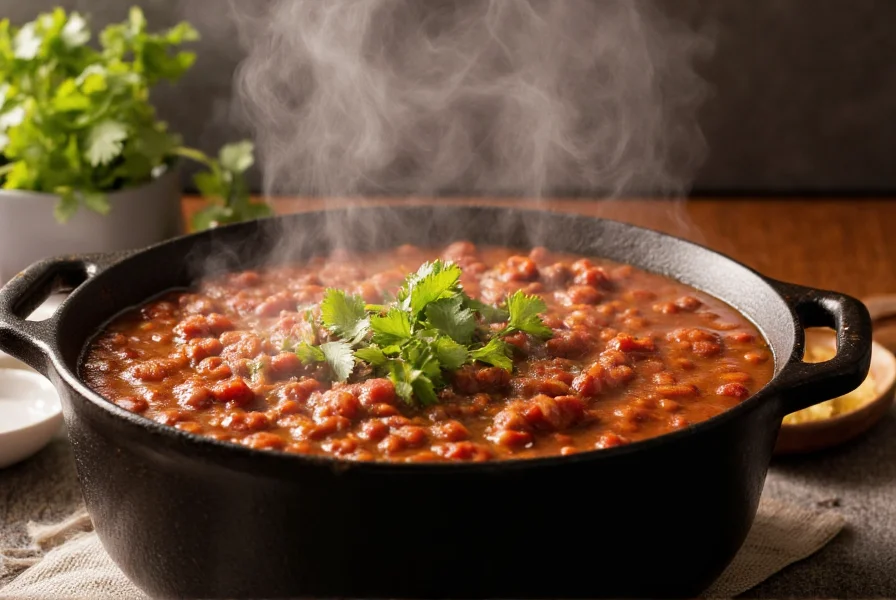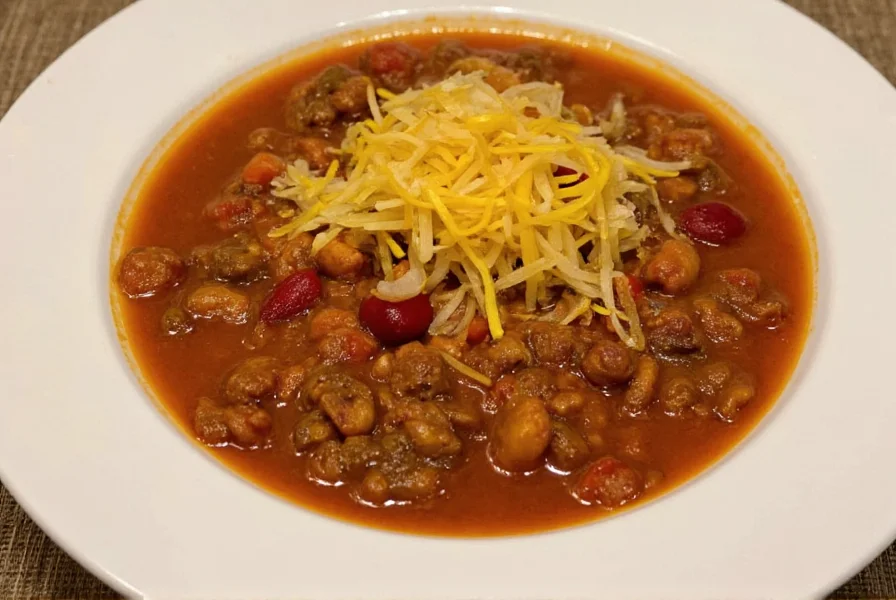Making your own chili seasoning mix from scratch transforms ordinary chili into an extraordinary dish with fresh, vibrant flavors. Unlike commercial blends that often contain fillers and preservatives, a homemade chili mix lets you control ingredients, adjust heat levels, and create a signature flavor profile that suits your taste preferences perfectly.
Why Homemade Chili Mix Beats Store-Bought
Commercial chili seasoning packets typically contain 30-50% fillers like flour, cornstarch, or maltodextrin that dilute flavor and can create a pasty texture in your chili. When you create your own easy chili spice mix without fillers, you get pure spice flavor that infuses directly into your dish. Plus, you avoid unnecessary sodium and preservatives while gaining complete control over heat level and flavor balance.
Core Ingredients and Their Flavor Contributions
Understanding what each component brings to your authentic chili powder recipe helps you customize effectively:
| Ingredient | Flavor Profile | Function in Chili Mix |
|---|---|---|
| Ancho chili powder | Rich, slightly sweet, raisin-like | Base flavor and color |
| Ground cumin | Earthy, warm, slightly smoky | Signature chili depth |
| Garlic powder | Pungent, savory | Umami enhancement |
| Onion powder | Sweet, aromatic | Flavor foundation |
| Paprika | Mild, sweet pepper | Color and subtle sweetness |

Perfect Basic Chili Mix Recipe
This homemade chili seasoning mix recipe creates enough for one large batch of chili (serves 6-8):
- 2 tablespoons ancho chili powder (not regular chili powder)
- 1 tablespoon ground cumin
- 2 teaspoons garlic powder
- 1 teaspoon onion powder
- 1 teaspoon smoked paprika
- 1 teaspoon dried oregano, crushed
- 1/2 teaspoon cayenne pepper (adjust to taste)
- 1 teaspoon sea salt
- 1/2 teaspoon black pepper
Instructions: Combine all ingredients in a small bowl, whisking thoroughly to ensure even distribution. Store in an airtight container until ready to use. For best flavor, let the mixed spices rest for 24 hours before using to allow flavors to meld.
Customizing Your Chili Seasoning Blend
One of the greatest advantages of making your own customizable chili seasoning blend is adapting it to your preferences:
Heat Level Adjustments
- Mild: Omit cayenne, add 1 teaspoon sweet paprika
- Medium: Keep cayenne at 1/2 teaspoon
- Hot: Increase cayenne to 1 teaspoon and add 1/4 teaspoon crushed red pepper flakes
Regional Style Variations
- Texas-style: Increase cumin to 1.5 tablespoons, omit paprika and oregano
- New Mexico: Replace ancho with 2 tablespoons New Mexico chili powder
- Cincinnati-style
- Beanless: Add 1/2 teaspoon cocoa powder for depth
Using Your Homemade Chili Mix
For the best chili mix for beef chili, use 3-4 tablespoons of your blend per pound of meat. Brown your meat first, then add the seasoning and cook for 1-2 minutes to toast the spices before adding liquids. This how to make chili powder from scratch technique creates a flavor foundation that permeates your entire dish.
Don't limit your mix to just chili—this versatile blend works wonderfully as a rub for meats, in taco seasoning, or sprinkled on roasted vegetables. For chili mix for slow cooker recipes, use the same measurements but add an extra tablespoon of liquid (broth or tomato sauce) to compensate for less evaporation.

Storage and Shelf Life
Properly stored in an airtight container away from light and heat, your how to store homemade chili mix will maintain peak flavor for 3-4 months. For longer storage, keep in the freezer where it will retain quality for up to a year. Always use a clean, dry spoon when measuring to prevent moisture contamination that shortens shelf life.
For gluten-free chili seasoning mix assurance, verify all individual spice components are certified gluten-free, as cross-contamination can occur during processing of single-ingredient spices.
Troubleshooting Common Issues
Problem: Chili tastes bitter
Solution: You may have burned the spices. Always toast spices in oil for no more than 1-2 minutes on medium heat.
Problem: Flavor seems flat
Solution: Add 1/4 teaspoon acid (like vinegar or lime juice) to brighten flavors, or 1/2 teaspoon brown sugar to balance heat.
Problem: Mix clumping
Solution: This happens with humidity. Add 1/2 teaspoon rice grain to the container to absorb moisture, or make smaller batches more frequently.
Frequently Asked Questions
How much chili powder should I use in a standard chili recipe?
For most chili recipes, use 2-3 tablespoons of chili powder per pound of meat. When using a complete chili seasoning blend like this recipe, increase to 3-4 tablespoons per pound since it contains multiple spices diluted with each other.
Can I substitute regular chili powder for ancho chili powder in this mix?
Yes, but the flavor profile will differ. Ancho chili powder (made from poblano peppers) has a fruitier, sweeter profile, while regular chili powder is typically a pre-mixed blend. If substituting, reduce other spices by 25% to avoid overpowering your mix.
Why does my homemade chili mix taste different from store-bought?
Commercial mixes often contain fillers, anti-caking agents, and consistent but artificial flavor profiles. Your homemade version will have brighter, fresher spice notes without these additives. The flavor difference is actually a benefit—your chili will have more complex, authentic taste without the pasty texture that fillers create.
How can I make my chili less spicy after it's already cooked?
Add dairy (sour cream or shredded cheese), acid (lime juice), or sweetness (a teaspoon of honey). You can also increase other ingredients proportionally—add more beans, tomatoes, or meat to dilute the spice level without watering down your chili.











 浙公网安备
33010002000092号
浙公网安备
33010002000092号 浙B2-20120091-4
浙B2-20120091-4